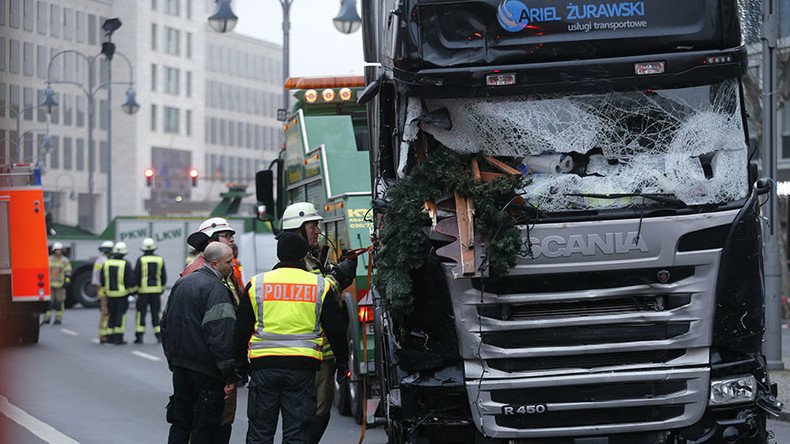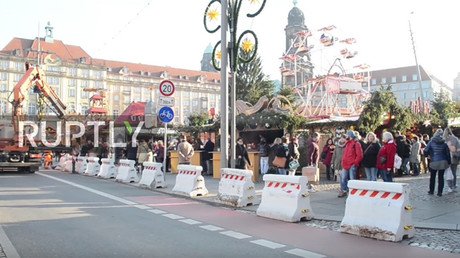Can concrete barriers protect against truck attacks? Germans stage crash test to find out (VIDEO)

In recent months, authorities across Europe have tried to minimize the threat of truck attacks by installing concrete barriers around public areas. A German company has now crash-tested a 10-ton lorry to see if those barriers would be of any use.
After deadly truck attacks in Nice, Berlin and Stockholm – as well as the attack in London that involved a car being driven at pedestrians – it is clear that this new and destructive form of terrorism can cause multiple casualties.
In Berlin, following the Christmas market attack last December, German security authorities installed massive concrete barriers around vulnerable public places such as city squares and parks. Concrete bollards, dubbed ‘Nice barriers’ in the German media, were first installed in the city of Dresden last year.
The simple anti-ramming measure was said to reduce security risks, but it wasn’t until April this year that a German company actually tested its effectiveness.
A comprehensive crash test by Dekra, one of Germany’s largest transportation safety companies, involved a 10-ton lorry – said to be identical to that used in the 2016 Nice attack – and a number of concrete barriers.
According to broadcaster MDR, which filmed the test, Dekra utilized “the most solid bollards available on the market,” weighing 2.4 tons each. Similar concrete barriers are being used to secure public places all across Germany, MDR said.
During the first phase of the test, the 10-ton truck rammed into the bollards at 50km/h and penetrated the security barrier with almost no loss of speed. Marcus Gaertner, head of Dekra’s test team, said the containment effect “was relatively low,” and that the truck used in the Berlin attack was much heavier.
In the second scenario, the concrete barriers were placed at an angle of 30 degrees to the roadway, so that the vehicle would hit them from the other direction. As in the previous case, the truck slightly veered off course, but was still able to pierce the barrier.
Dresden police chief Rene Demmler, who drafted guidelines on the use of the barriers, called the Dekra experiment “nothing but disappointment.” Speaking to MDR, he said the crash test “made it clear that more resources are still needed to reduce the risks to a greater extent.”
However, authorities in Hamburg, where the ‘Nice barriers’ are currently being installed, said there is no need to change the security concept. “We’re frequently reviewing our security measures,” Hamburg police spokesman Ulf Wundrak told NDR.
The latest truck attack took place last week in the Swedish capital, Stockholm. According to local investigators, the driver – a failed asylum seeker – drove a cargo truck into crowds outside the Ahlens department store in Drottninggatan, one of the city’s main pedestrian areas, killing four people and injuring dozens of other.
The deadliest terrorist attack involving a vehicle was in the French city of Nice in July 2016, when the attacker rammed his lorry into crowds celebrating Bastille Day, killing 86 people and injuring more than 400.













